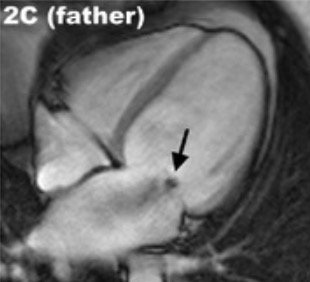Playlist
Show Playlist
Hide Playlist
Dilated Cardiomyopathy – Cardiomyopathy
-
Slides 05 Cardiology Alpert.pdf
-
Reference List Cardiology.pdf
-
Download Lecture Overview
00:00 Well, let’s start with dilated cardiomyopathy, one of the most common. It starts with dilatation of the cardiac chambers, usually the left ventricle to start with and this is an attempt at compensating for damage to the heart muscle in the left ventricle. Remember Starling’s law, the rubber band law of the heart? There’s an attempt here, as the heart dilates, to actually improve its squeeze and improve the stroke volume and cardiac output. It’s quite common. There’s approximately 10,000 deaths a year in the United States from this. This is quite a small number compared to ischemic heart disease, but nevertheless, these patients are quite sick and so, they are often repeatedly in the hospital. Again, the underlying pathophysiology is abnormal heart function. When little chunks of heart muscle are taken, for example, when these patients undergo heart transplantation and they’re put into a little experimental muscle bath, you can see that they contract very weakly as compared to a normal heart muscle. 01:10 When I was in training, it was thought that a genetic form of dilated cardiomyopathy was quite rare. However, now that we have DNA analysis and there’s been a great deal of research done in this area, it turns out that, in fact, 1/3 of patients have a genetic abnormality as the cause of their dilated cardiomyopathy and in the future, it may be even a higher percentage. What happens with these DNA abnormalities is that a piece of the protein that is involved in the contracting mechanism of the little heart cells is actually abnormal. There’s an abnormality in the motor, if you will, which is transmitted genetically by the DNA. 01:53 Here’s a little diagram which shows you on the left-hand side, the normal heart. You can see the normal thickness of the left ventricle, normal thickness of the right ventricle, normal cavity size. Look at the right-hand diagram. You can see that the right and left ventricle are both quite dilated, and the left ventricle is particularly thin-walled. The right ventricle isn’t much thin-walled, but it is quite dilated. And of course, this is what happens in the process of the development of this cardiomyopathy. First, the left ventricle begins to fail. It dilates up. That results in increased pressures in the lung, and that results in increased work of the right ventricle, and eventually, then the right ventricle dilates and fails. It’s a common question to medical students - What’s the commonest cause of right ventricular failure? And the answer is, of course, left ventricular failure because the two are connected and related in the same system. 02:53 Here is a little more colorful diagram showing you the same thing. On the left-hand side, we see the normal heart - normal left ventricular cavity, normal thickness. On the… Below it, the right ventricle, and here, on the other side, you see the dilated cardiomyopathy - dilated left ventricle, dilated right ventricle. You can also see how when the ventricle dilates, the ring that contains both the mitral valve and the ring that contains the tricuspid valve could be stretched leading to secondary mitral and tricuspid regurgitation. Remember, we talked about that in the valvular heart disease section, that a common cause of mitral and tricuspid leaks were dilatation of the ventricle when they stretch the annulus that is the ring in which the valve sits, little fibrous ring in which the valve sits so that the valve leaflets can’t come quite together, and consequently, there’s regurgitation. Sometimes when the patients are treated successfully and the ventricles shrink down a bit, so-called functional mitral and tricuspid regurgitation can get better. 04:01 Now, let’s talk a little bit about statistics. Again, dilated cardiomyopathy, not that common, 5 to 8 per 100,000. Coronary disease, much much more common. But, nevertheless, it is a very serious condition when it develops. In previous times, 50% of these patients would be dead within 5 years. These days, about 75% survive 5 years. Still, that’s a very high mortality rate. Indeed, many cancers are not quite as bad as that. And we think of heart failure particularly related to cardiomyopathy as a very malignant disease within cardiology.
About the Lecture
The lecture Dilated Cardiomyopathy – Cardiomyopathy by Joseph Alpert, MD is from the course Cardiac Diseases.
Included Quiz Questions
Which of the following types of cardiomyopathy is the most common type?
- Dilated
- Restrictive
- Hypertrophic
- Arrhythmic right ventricular
- Amyloid
What is the most common cause of right-sided heart failure?
- Left-sided heart failure
- Chronic obstructive lung disease
- Pulmonary valve stenosis
- Pulmonary embolism
- Dilated cardiomyopathy
Customer reviews
3,0 of 5 stars
| 5 Stars |
|
1 |
| 4 Stars |
|
0 |
| 3 Stars |
|
0 |
| 2 Stars |
|
0 |
| 1 Star |
|
1 |
Covered the most important parts of DCM in a very short time period. The teaching is top-notch!
class has very low value. no practice, poor application to boards. may be if i was going to write a book could be valuable but not for pt. treatment nor use useful for boards.




